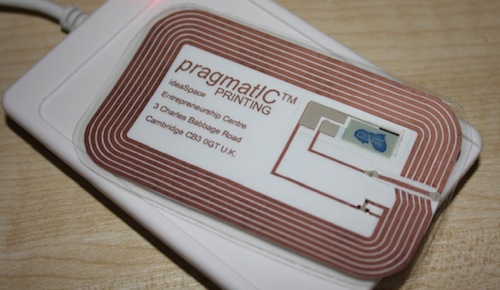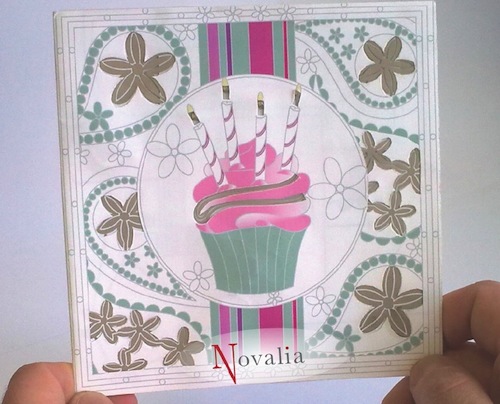With price pressure and volume reductions being forecast for print, the industry it is on the lookout for new opportunities. Adding electronic capability has been on the horizon for many years. After a hiatus instigated by the global slowdown, there are encouraging examples of how print might evolve to create new high-value print products.
The printing of products like packaging labels is now incorporating capability for adding electronic functionality directly to the printed media. In 2012 US Home Depot stores will introduce smart packaging from MeadWestvaco with integrated security tags. Such smart packaging applications are early examples of the opportunities available in printed electronics.
Progress
Two Cambridge companies have made impressive progress in the area. One is PragmatIC Printing, a Cambridge University spin-off looking to add interactivity to print products. One application is in security, allowing a consumer to authenticate a product by displaying a visual feature when touched, or placed near an RF source.

A PragmatIC interactive tag. The De La Rue logo appears when the tag is in close proximity to the RFID reader
The company has a development with De La Rue, the ‘Remotely Activated Interactive Labels’ (RAIL) project. No battery is required for the interactive labels: power is harvested wirelessly from a standard radio frequency ID or near-field communications reader.
Such readers are quickly becoming widespread – for example in contactless retail payment systems, or integrated into latest-generation of mobile phones. This means the labels can be extremely flexible and thin (around 50μ), and are also compatible with conventional hot lamination processes.
Another Cambridge company working to turn print into a two-way experience is Novalia. The start-up is taking a design-led approach to incorporating additional functionality into print. It is working in response to customer requests to grab attention, touch and interact, then educate.

Novalia talking book
Novalia has several prototypes that it has developed to demonstrate the capabilities of its technology. The company prints circuits and embeds components into printed items in a way that complements the design of a product or display.
Interactive
One example is a poster that depicts a drum kit. When touched, the integrated electronics can provide a range of sounds to make the drum kit interactive.
Other demonstrators include a display for the ingredients in a cocktail; a citizenship poster, providing a series of choices that lead to very different life outcomes; and a children’s book incorporating sound, providing an additional experience as the book is read.
The applications for such innovations are broad: printed media that engages a passer-by or shopper, helps transmit information to the user or adds value to an existing product (such as a children’s book) are all promising.

Novalia interactive birthday card
The technology is not enough in itself, of course: there are countless examples of interesting technology that does incredible things, but never makes the step to commercial use.
Interaction
Novalia, on the other hand, is aiming to take print products to the next level, with innovations designed around the desires and needs of the user.
The company’s engineers develop electronic modules, including software libraries for user interaction flow, and input/output drivers. Conductive inks and functional adhesives are combined with graphics printing and testing to create new print.
The first bulk products are scheduled for roll out early in 2012. The company is an enabler, rather than a pure technology company. This profile requires a completely different approach to the market – providing engaging products, rather than a dry technology like a straightforward component.
The vision of the company is an ‘interactive world enabled by integration of traditional print and conventional electronics.’ These are new opportunities for print providers to make products more engaging and appealing to customers, by building an experience into it. Whether the ubiquitous integration of interactive technology hinted at by Novalia’s vision is realistic remains to be seen; but it seems integrated electronics are coming to print, soon.
The full version of this article appears in Digital Demand World, which provides exclusive news and analysis on developments in digital and inkjet printing. To subscribe or find out more visit the Digital Demand World (http://www.pira-international.com/Digital-Demand-World-incorporating-Industrial-Inkjet.aspx) product page.















Discussion
By Erik Nikkanen on Aug 27, 2012
There does not seem to be much opportunity for offset litho printers to print PE.
One reason is that it seems that lithography is not so suitable for printing electrical circuits due to the lack of developing suitable lithographic inks that have the required electrical properties. Just about every other printing process is more suitable and are being investigated by researchers.
Maybe things will change in the future but that is what I have been told by those that are in that industry.
By Janel Nielsen on Feb 14, 2013
With modern equipments advanced printing styles growing now a days.
http://www.inkpressboutique.com
Discussion
Only verified members can comment.